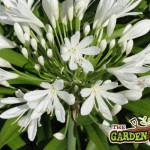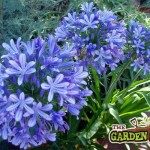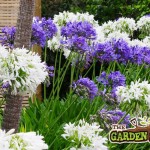Agapanthus Umbellatum
SEE IMAGES OF AGAPANTHUS:
- Agapanthus Umbellatum (White)
- Agapanthus Blue
- Agapanthus in Flower Bed
Agapantus Shape & Size
Final Height: 90 m- 120cm
Final Spread: 60cm
Growth Rate: Moderate / fast
Type: Herbaceous Perennial – No woody stem, dies down in Winter, comes back every year
Habit: Tall, spiked flowers appear from a clump of sword like foliage
Agapanthus Features
Foliage: Deciduous & Herbaceous
Colour: light green during spring summer & autumn.
New foliage appears the following spring
Shape: Elongated, Sword Like.
Agapanthus Flower
Cluster of single stems produce one flower each
Flower consists of umbel with 20 – 30 trumpet shaped flowers
Colour: Light Blue or White
Time: June – August
Agapanthus Location
Uses: These tall flowering herbaceous perennial is suited to flowering & herbaceous borders. Plant towards the back of borders in long drifts or group 5 or 7 together to form large clumps or blocks. Prefers a sheltered spot, avoid exposed, windy sites and frost pockets
Aspect: Full Sun /
Soil: Moist soils, Clay soils
pH: Alkaline / Acidic
Hardiness: Hardy to Half Hardy
Companion plants: Echinacea, Rudbeckia, Heleniums, Lupins, Astilbes, Grasses
Agapanthus Information
Grown for their showy flower displays, Agapanthus would benefit from additional watering in summer times. These are marginal plants and can be found around the edges of ponds and lakes in their native lands
Whilst hardy these plants are best protected from the harsh winters using a cloche or frost fleece.
They can be grown from seed, but most commonly Agapanthus is propagated from root cuttings. This can be done in late autumn. Lift and divide over grown clumps every 4 years. At this point you can break off sections of root and propagate them indoors in pots or seed trays


